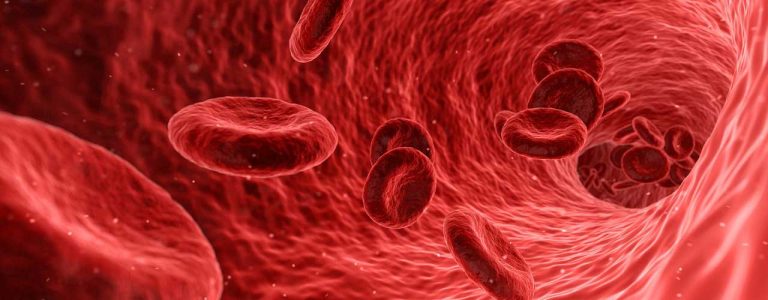Attending a rehab facility remains one of the surest ways of treating substance abuse and addressing alcohol and drug addiction. Residential treatment is the most intensive and generally most effective form of substance abuse treatment, at least in the early stages of the treatment process.
The length of stay in rehab depends on a number of factors. These include the level of care an individual requires, the nature of the addiction for which they are seeking treatment, their financial means, insurance coverage, and so on. Generally speaking, the more serious their substance abuse has been, the greater their recommended length of stay will be. This is partly because it may take days or even several weeks for their body to fully detox. As a result, it also takes time for full mental clarity and emotional stability to return.
The best outcomes following rehab treatment are usually associated with longer stays in a treatment center, particularly when it comes to maintaining sobriety in the long term.
Click here If you are looking for rehab in Orange County
How Long Does a Rehab Program Last?
Most rehab centers offer addiction treatment programs that last thirty, sixty, or ninety days. Thirty days is the average length of stay. There are various reasons for this. Insurance coverage can be more difficult to secure for longer stays, while an average insurance provider is usually happy to approve a one-month rehab. Many people cannot take more than a month away from work, family life, or other obligations. But, in the space of thirty days, a person can usually make good progress.
Quite often, neither treatment centers nor their patients initially know how long rehab will last for them. Thirty days is usually the minimum suggested duration suggested. It gives both patients and addiction treatment professionals alike the chance to monitor how well someone is doing. They can then establish whether or not a longer stay could benefit the individual.
Treatment centers almost systematically offer seven-day treatment also. However, these seven-day stays are not intense, brief treatment for substance abuse, they are the necessary detox that initiates the recovery process. Rehab centers mostly offer seven-day medical detoxes as the first part of more long-term treatment. In fact, detox will be mandatory for many patients, since they will not be able to gain the full benefit of the therapies the treatment provider offers without first being clean of drugs.
Some people may wish to seek the professional medical advice of their MD or treatment provider, as to which treatment options would be best suited to their case.
Thirty-Day Programs
Thirty days is the most common length of stay for most people, and the duration is generally suggested for those attending rehab for the first time, especially for alcohol abuse. Aside from the reasons mentioned above, thirty days is a less intimidating duration to commit to than anything longer than a month.
Thirty days is usually long enough to detox and recover from withdrawal symptoms. It leaves time for rehab counselors and staff to discuss any behavioral health conditions or mental health concerns a person may have. Rehab staff will work to grasp in detail the overall picture of a person’s drug abuse history and patterns, and their current situation.
Thirty-day stays are quite intensive; however, during that time, many issues need to be addressed. Staff will discuss with patients how to establish an aftercare plan, to help them achieve long-term sobriety.
Sixty-Day Programs
Thirty-day programs often address the ‘alligator nearest the boat’, that is, the most pressing behaviors threatening a person’s health and safety, beginning with their drug use. Sixty-day programs allow a more in-depth exploration of the underlying causes of a person’s substance use disorder, and what triggers their drug or alcohol misuse. It gives their body more time to recover from the physical effects of their addictive substance habits. Counseling sessions over a longer period can help them begin to address broader issues, such as past trauma or family dynamics. These can also help identify any mental health disorder that may be pushing individuals to self-medicate with drugs. Indeed, pre-existing mental illness is a common cause of substance use disorders.
Benefits of a Ninety-Day Program
The National Institute on Drug Abuse states that “remaining in treatment for an adequate period of time is critical.” The Institute acknowledges that the appropriate length of rehab varies for each individual. It also points out: “Research indicates that most addicted individuals need at least three months in treatment to significantly reduce or stop their drug use,” and that the more positive outcomes occur with longer treatment durations.
Although longer stays in rehab lead to better success rates, it is a fact that most people fighting to overcome addiction are unable to spend three months there. And yet, if their length of rehab is too short, many struggle to subsequently maintain sobriety, far less lay the foundations for lifelong recovery.
Of the three treatment options discussed here, ninety-day programs lead to the highest success rates. This is largely because ninety days is enough not only for comprehensive addiction treatment but also for someone to lay the basis of a new lifestyle, free of drugs and alcohol. Another essential component of substance abuse treatment is preparing people for life after their time in a treatment facility – life on the ‘outside’. Support groups are an important part of recovery after rehab.
A ninety-day program can be a lifesaver for those with long-term or severe addictions and for those who suffer from frequent or cyclical relapses. It may be the game-changing opportunity they need to undergo the treatment process more thoroughly.
Residential Treatment and Outpatient Treatment
Standard rehab addiction treatment involves living in a treatment facility for the duration of the treatment program. There are a number of reasons why licensed medical professionals and addiction specialists in rehab centers strongly recommend inpatient treatment.
Treatment facilities provide a safe environment. In rehab, people are away from the people, places, circumstances, and triggers that usually accompany their substance use. Rehab programs are more effective when trained professionals can proved care 24/7 and when people are totally immersed in, and committed to, the treatment process.
An inpatient rehab offering residential treatment is also the best place to begin to create healthy habits and practice living free of substances.
In contrast, outpatient treatment allows people to continue living at home while receiving daily addiction treatment. They attend a rehab center or clinic for whatever counseling or group therapy has been recommended. This is a good arrangement when family and friends can form an adequate support network.
Nevertheless, non-residential treatment is never the ideal option, especially during the first weeks of treatment and abstinence. A person will still be confronted with a familiar environment and may struggle with cravings and urges. They may also find it more difficult to cut ties with drinking or buddies who use. Whenever possible, a person should definitely consider a stay in a rehab center for the more intensive treatment it provides. Once they have some solid sobriety time, rehab staff can then make suggestions as to how to transition to part-time treatment options while living outside.
How Long is Drug Rehab?
Drug rehab is ideally ninety days. Recovering from drug addiction is a complex process. As the National Institute on Drug Abuse reminds us, for recovery to work, treatment must look not only at a person’s drug use, but also at any underlying mental health issues, social and familial factors, legal and financial issues, and so on. Also, it can take a long time for a person to recover fully from the negative effect of drugs, which modify brain chemistry and put a strain on the body.
How Long is Alcohol Rehab?
Alcohol rehab is typically thirty days. Alcohol detox is often quicker than detoxing from drugs. As a result, people generally recover more quickly mentally and physically from its effects and are able to focus more fully on their treatment program. Thirty days is enough to experience considerable benefits.
Common Questions
Is Rehab Covered by Insurance?
Yes. Generally, a health insurance provider will cover all or part of the cost of rehab treatment. Addiction – substance use disorder by its medical name – is a diagnosable medical condition. As such, it qualifies as a disease like any other and requires appropriate treatment.
How Much Does Rehab Cost on Average?
The National Center for Drug Abuse Statistics puts the average cost of a thirty-day inpatient program at $12,500. However, these government statistics take into account the most basic facilities, hospital treatment, and clinics, some of which are not specifically recovery centers. If you don’t feel comfortable and relaxed in rehab, your time there may be counterproductive in some ways. Realistically, the lower end of the scale for a quality, standard thirty-day program is around $14,000. A more comprehensive program, with more services and better amenities, can cost $27,000 to $30,000, with luxury rehabs in higher price ranges.
However, one thing is certain. For many people who arrive in rehab, their addiction has already cost them far more than the price of their stay in a treatment center. It is likely to cost them vastly more again, if they do not address their substance use disorders.
What’s The Shortest Time You Can Stay in Rehab?
Thirty days is usually the duration of the shortest program a rehab center or treatment provider will offer. A number of centers offer two-week or three-week options, as a concession to people’s availability and resources. However, the general consensus among addiction professionals is that anything less than thirty days is not enough to properly treat an addiction.
Treatment Facility
At Cornerstone, we believe that the residential treatment setting can be the best for recovery. With us, you’ll receive the caring, professional treatment you need, away from the stress and distractions of the outside world. Reach out to us to learn more about our services.






